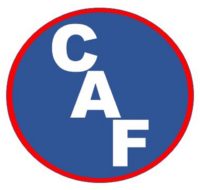Why we use water:
Water is abundant, readily available (in most areas) an is fairly easy to transport via pipeline & hydrants or water trucks.
Water has the ability to absorb a tremendous amount of heat, thus cooling the fuel to extinguish the fire.
Note that no where in the above statement does it say that water actually does absorb a tremendous amount of heat to cool a fire, at least not efficiently and that is why water causes so much damage.
The problem in using water is getting it to absorb the heat efficiently. Inefficient application results in water waste which equals water damage ($$$).
Water has high surface tension (ST), doesn’t adhere to carbon, when sprayed in straight streams or fog drops, has a low STMR and is affected by gravity.
Why use concentrates?
Concentrate enhances water to become a more effective tool in fire extinguishment (see the chart for each type of concentrate used in the fire service).
Water can be enhanced to wet fuels (where water is absorbed into ordinary combustibles to prevent ignition); to become carbon loving to provide protective barriers (buildings are designed to shed water/rain) by sticking to the tops and sides of fuels (trees logs, grass, structures, etc.); or by providing protective blankets to eliminate or suppress the production of flammable/combustible vapors (Class B Hydrocarbons). And, water can be enhanced to absorb heat faster by increasing the surface area of the water (STMR) by changing water drops into water bubbles (FOAM).
Water can also be enhanced to become carbon loving. Water by itself has no affinity to carbon. It will basically roll off ordinary combustibles (carbon). Water’s only effect on Class B fuels (hydrocarbons) is that it is heavier than the fuel and will lift fuel and aid in floating it away, all the while the fuel is still producing flammable vapors.
Class A concentrates are designed to be carbon attractive causing the enhanced water to stick to the ordinary combustible fuel.
Class B concentrates (sometimes referred to as “light water”) enhance the water to be lighter than the hydrocarbon fuel, thus when mixed with additive chemicals (fluorine) would create a mixed bubble blanket and film on top of the hydrocarbon to suppress the vapors.
Water by itself is only good as a heat absorber if applied efficiently, which seldom happens in water only firefighting.
Enhanced water can do incredible additional functions.
NOTE: not all concentrates provide the same enhancements to water. Each concentrate type is designed to aid water in specific enhancements for specific purposes or jobs. This explains why there are so many different concentrates available – each has a specific function. Firefighting personnel must understand the specific function of the concentrate products to insure that you are using the right product for the right job.
Water – the only way to increase water’s STMR is to make smaller drops, but no matter how small, drops will always be affected my gravity and have a certain amount of interior water that is not exposed to the heat.
So how do you make foam? – A simple formula…
W (water) + Conc (concentrate) = Solution + Air (NAF or CAF) + Agitation (stir it up) = Foam (Bubbles)
The top menu follows this formula!!!!

































